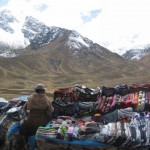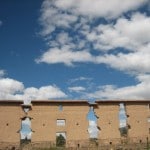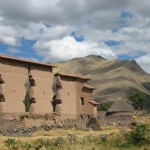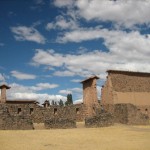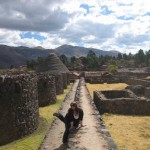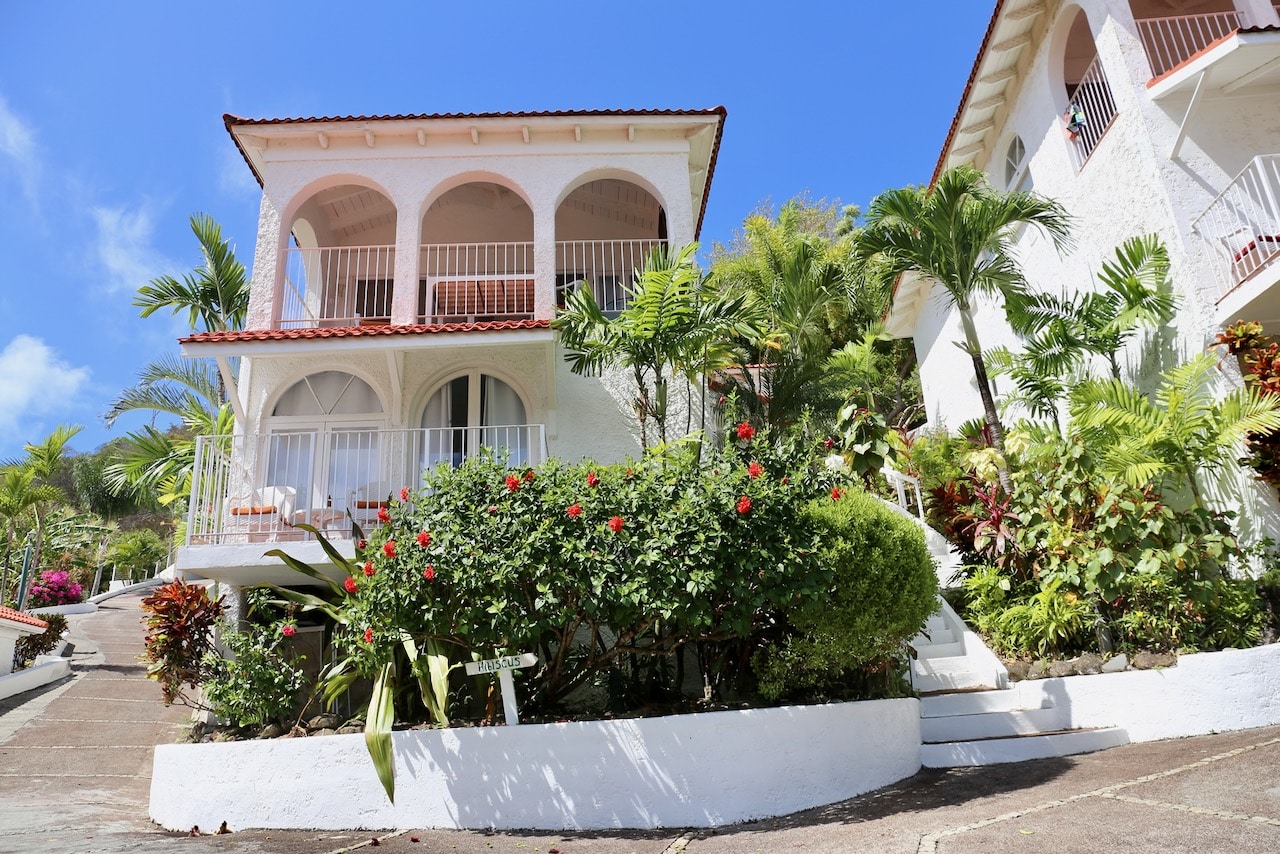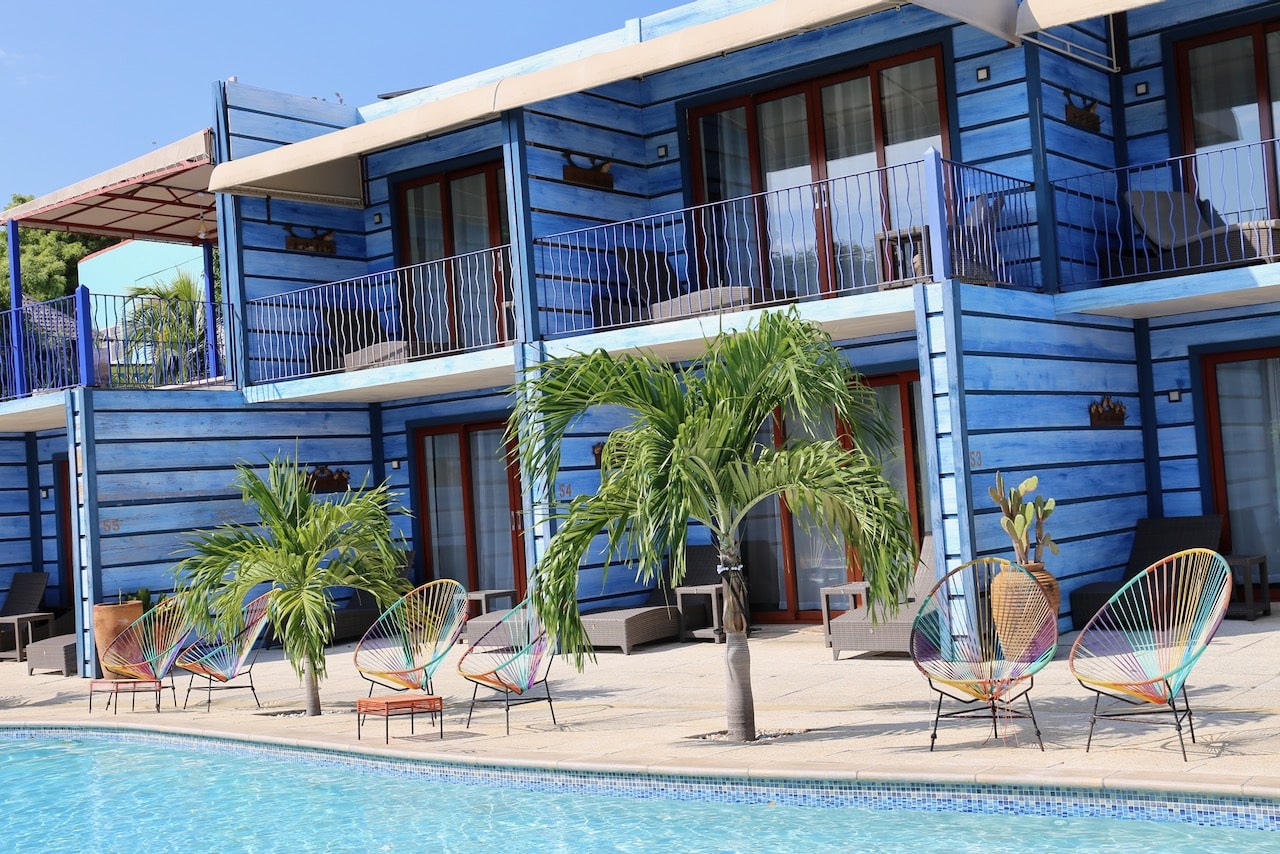Our cab rushed us to a luxury tourist bus called the Inca Express. We had heard that the Inca Express was the best way to enjoy the eight hour drive (or train) to Cuzco from Puno. The Inca Express is a perfect way to stop and go as you make the long drive up to Cuzco. Each bus comes with a handy guide who takes you to four historical sights between Puno and Cuzco. Once on the bus we heard several tourists chatting about how happy they were to finally get a chance to get out of Puno. Unannounced to us there had been a rather irritating road block on the Puno to Cuzco route. Apparently everything shut down and blockades were in effect. This time around, it was the national teachers union who were causing the rift. We fortunately booked our bus tickets the first day the route opened up again. A few girls were also mentioning that most people would normally have taken the train as it is not affected by road blocks. But of course, another snag, the train derailed a few days ago so that mode of transport was also unlikely. Our tour guide (who I like to call the mumbler) tells us the total drive is 330 km (at 7am this sound rather arduous). He starts with a rather dry joke “I am Jose, it is a famous name, there are thousands of Jose’s.” We had a two hour drive ahead of us so I plugged in Madonna and enjoyed her Ray of Light album. I stared out the window at rolling olive green hills and long tuffs of grass that could be seen piled into pyramids along the road side to be used as animal feed.
We first stopped in the small town of Pukara. We walked as a group through a market where a few toothless women were selling natural medicines from the jungle. We then walked into the town’s museum where we spent the next 45 minutes touring the outdoor courtyard and interior rooms which are full of pristine Incan monoliths, art and ceramic pottery. I found the initial chat about the history of Incan civilization fascinating. The first Inca dates back to 3000 BC and was called the “Caral” community. For a frame of reference, this is the same time the Egyptians were building the Pyramids at Giza . The museum focuses on the period from 500 BC to 400 AD as a large archaeological site is located north of the city and many of its treasures can be found within the walls of the museum. We were told the legend of how the Inca began. The first Inca, Marco Qhapae was apparently born out of Lake Titicaca. Most fascinating was discovering what the “Incan Empire” really was. I thought Incans were like the Spartans or Trojans. The name of a warrior like civilization. I was shocked to find out that there were actually only thirteen Incas! I soon found out that Inca was the term for the kings of the period. The size of their kingdoms fluctuated over thousands of years depending on acquisition from war etc… When travelling through the ruins and museums of Peru you hear a lot about certain Incan Kings and generals who had a strong influence on the development of the many communities under their rule.
The central garden of the museum has an interesting selection of animal shaped monoliths such as frogs, pumas, snakes and lizards. The largest room inside the museum had a perfectly intact monolith twice the size of my body, behind a glass case. The stone has been carved into the shape of a man holding a knife in one hand and the head of a human in the other. We were told that human sacrifices after periods of warfare were common offerings to the gods. The final room was full of beautifully decorated ceramics. A perfectly in tact, puma decorated ceremonial bowl sat on top of a pedestal within a square glass case. Apparently this is the most well preserved ceremonial ceramic in all of Peru. Before leaving the museum we were shown a case full of little tools made of human bone used to make textiles. We walked to the central square and popped into the cities cathedral (with the off odour of mildew). A group of over twenty locals were sitting in front of a huge candle lit vigil for the Virgin. Walking toward the altar the hall was flanked on both sides with huge wooden sculptural works, many of which were covered in white painted doves. Peace.
We hopped back into our luxury bus and enjoyed staring out across the snow peaked mountains. It truly is amazing how the geography of a country (or any place really) can change so drastically. From rolling green hills to ice covered peaks. I stared out onto a landscape full of beef farms and street side goat herds. All of the communities in these rural areas are made of mud brick. Every few miles the ground is covered in bricks that locals have set out to dry in the sun. I started to get more and more excited as the sides of houses are decorated with huge murals of Incan soldiers and Rainbow flags. I had already heard about the Rainbow flag confusion and thought it rather funny. The ancient Incan flag is that of a Rainbow and has an uncanny (and pretty much exactly the same look) as the international Queer flag. The town of Cuzco is actually covered in streets with rainbow flags blowing in the wind. A lot of tourists are taken aback as they didn’t anticipate Cuzco to be “so gay.”
Our next stop was the town of La Raya which is the highest point on the route. We stopped on the highway and stared out onto a picture perfect post card panoramic. Mountains covered in snow and the beginnings of the large glacier that sits on top of the peaks. The hilly grass bellow is full of wandering Alpaca herds who seem to appear far warmer in the freezing cold wind that we do. The highway is covered in market stalls. We stopped off at one specializing in baby Alpaca fur hats. They were incredibly soft and rose about a foot off our skulls, covered in lush white fur. Approximately 80% of the crafts sold at markets in Peru are identical to those sold in Bolivia . The products in Bolivia however are half the price! Sarah noticed a creepy indigenous man staring at gringos in a set of small reeds. We took a picture of him so that we would never forget what a truly dodgy man looked like.
A few minutes down the road we stopped in a small village at an outdoor restaurant for lunch. We ate a buffet of fried bananas, potato fritters, pesto rice, curry chicken and animal crackers (a perfect finish). As we munched on lunch under the sun a local four man folk band started to jump around with their wooden flutes, drums and small guitars. The music here is fantastically up beat and tribal. I looked over at the table beside me and saw the perfect example of a white trash couple who are bound to get robbed. They walk over to my table and start talking to each other about the different national flags blowing in the wind over the hotel door. The lady says “I think that one is Spanish, no maybe South Africa.” They asked me what it was and I said it was the flag of Argentina . They stared at me in awe. I got the drift that the wanted me to describe the other ten flags for their amusement. I soon found out they were hippies from the California desert. Several of our group got caught up in the bathroom as they suddenly felt a quiver of dysentery. One lady actually the hippy, had to run after the bus as she sat on the toilet for to long and didn’t realize we were leaving.
We continued our drive along some of the most beautiful mountain filled countryside. Peruvians love to advertise on the sides of mountains. They knock down trees and spell out such phrases as “Viva Peru” and I think I even saw a coca cola ad etched into the side of a hill. We arrived at the impressive town of Raqchi where a huge Incan archaeological site can be visited. The site features a huge temple dedicated to Wiracocha the supreme God of the Incas. The entire village is built of volcanic rock and sun dried mud bricks. A volcano protects the community to the southern end and provided a great source of stone for the town’s buildings. We walked along several agricultural terraces, storage huts and priest cottages. The town was vast and it was rather surreal to be walking through a village where an entire Incan community lived hundreds of years ago. Outside of the ruins the tweedle-dee of bird chirps can be heard. As soon as a tour group exists all of the ladies manning their market station pick up their little bird call flutes. The market sold some rather odd items; ancient Incan warrior weapons including axes and slings with huge rocks at the end (for destroying peoples bones I presume). This area of Peru is the capital of ceramic arts. It makes sense as the soil is perfect for pottery (its stiff enough to make bricks anyhow).
In an hour we found ourselves at our last stop; Andahuaylillas and its famous cathedral which has been affectionately coined ¨The Sistine Chapel of the Americas.¨ The tour guide started to rant about all of the fresco covered walls. I felt the need to interject and tell him that no plaster was involved in the creation of these paintings. My Art History Professor Ms. Hickson would be proud I´m sure. I started to walk up and down the main corridor of the cathedral and chatted with Sarah about the religious iconography. It still mind boggles me to realize how Florentine Renaissance Art influenced the rest of the world. Here I am standing in a small village in Peru and I can see the borrowed artistic styles of Giotto and Michelangelo. We all huddled around the altar and discovered that the patron saint of the city is Peter. Our guide asked us to guess who was most likely being represented as a large statue at the centre of the altar. I felt the need to impress people. I waited a few moments and realized it was a trick question. There was no apparent symbol present to identify the statue. I chirped up and soon found out that the statue was of St. Peter but years ago his keys were stolen. It was as simple as that! Saint Peter´s keys were no where to see and therefore identification was impossible. Something like an art history mystery game. I wondered later why they never replaced the keys…perhaps they are ¨working on it.¨ I have decided that South American cathedrals are rather creepy. Full of terrifying mannequins dressed in ornate velvet costumes.
We drove a short thirty more minutes and arrived at the bustling centre of central Cuzco. We had finally arrived! Cuzco, the capital of the Incan Empire, the gateway to Machu Pichu!





